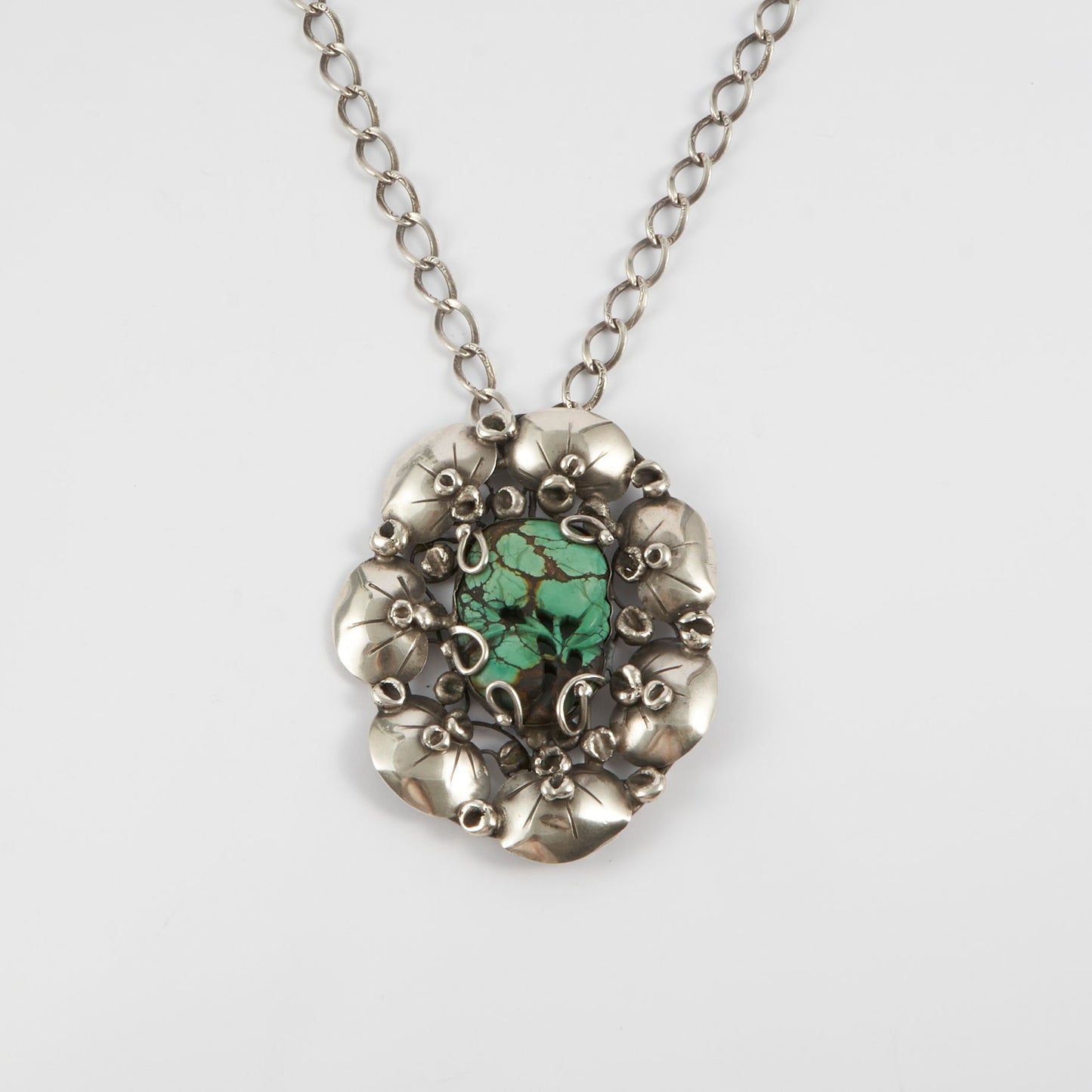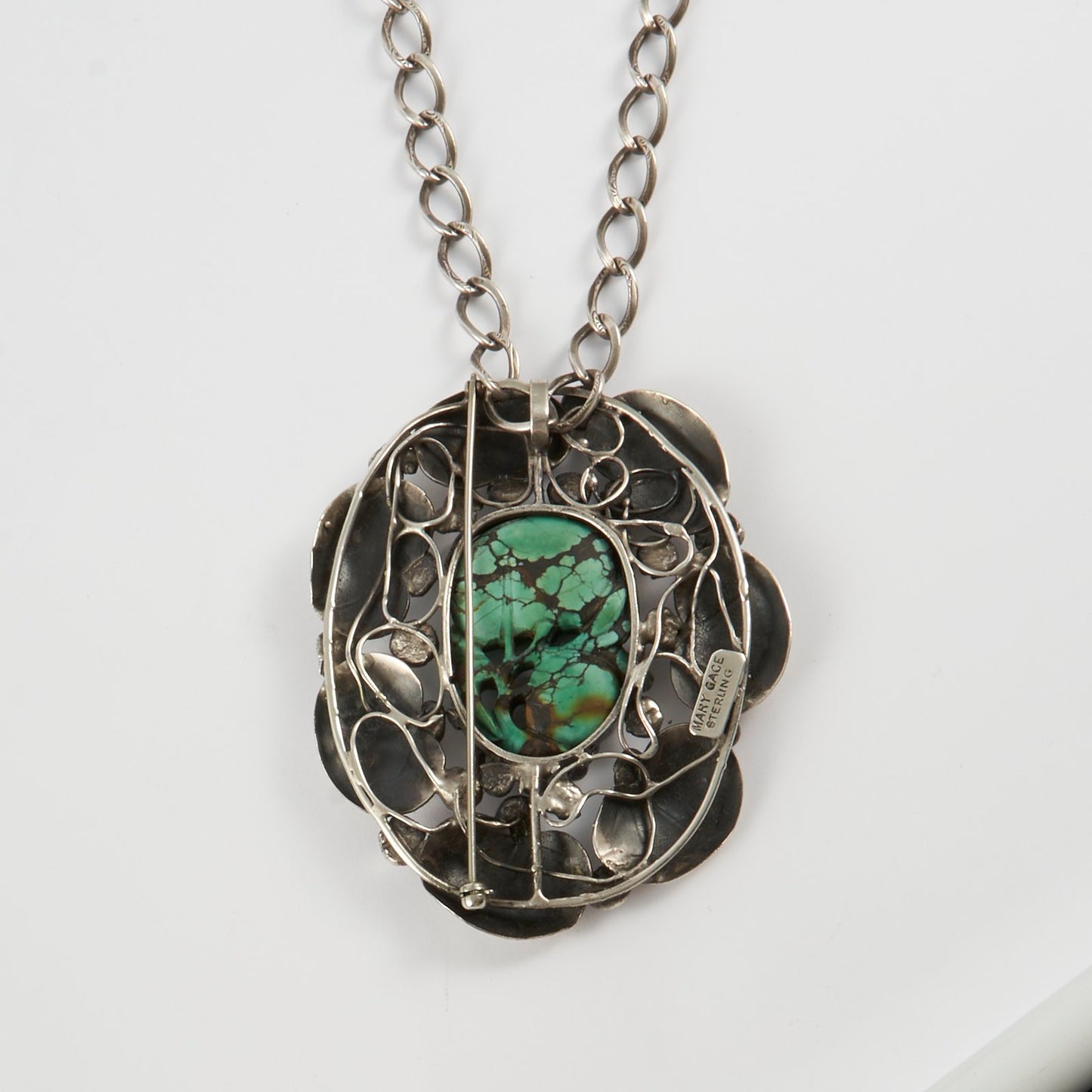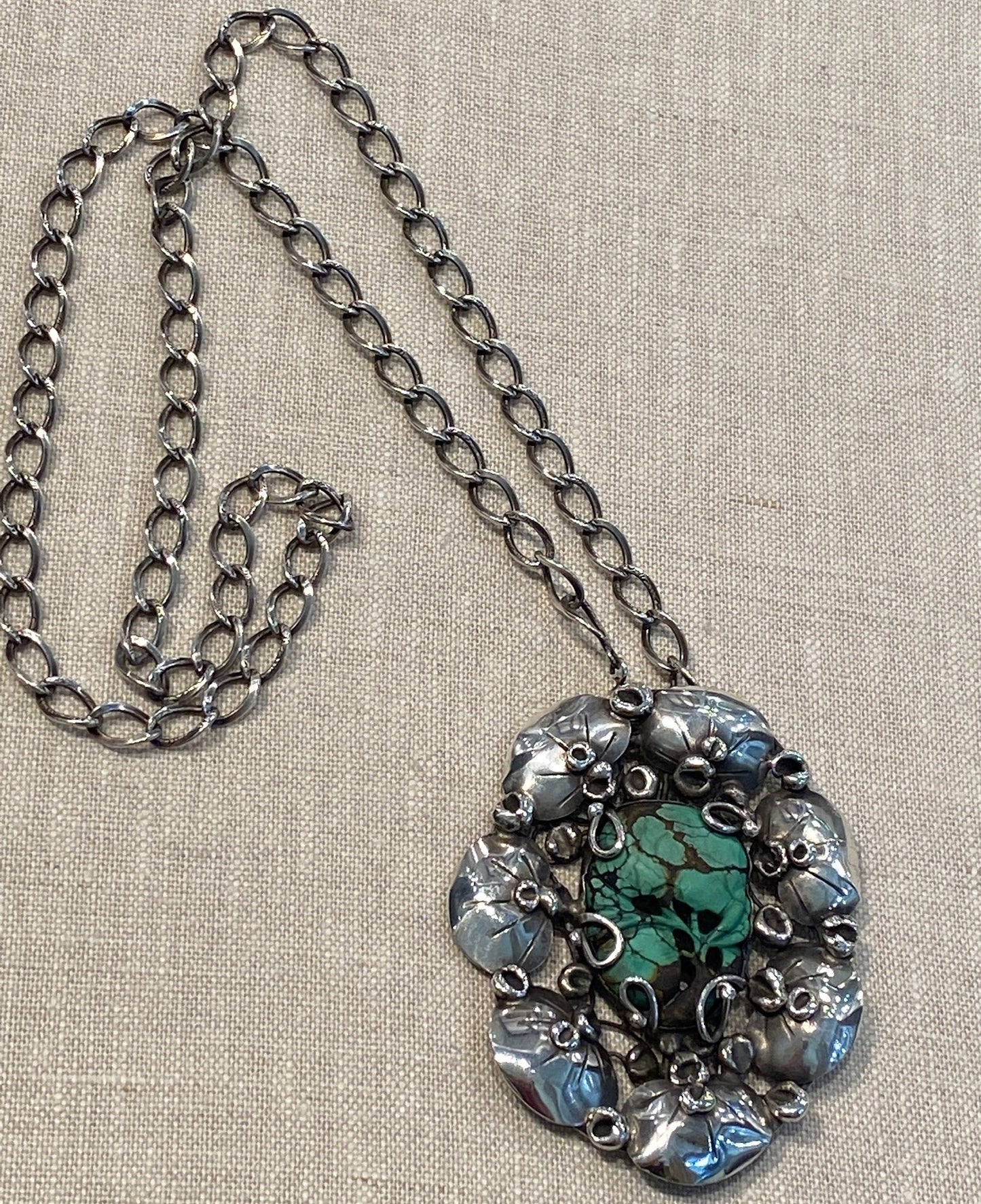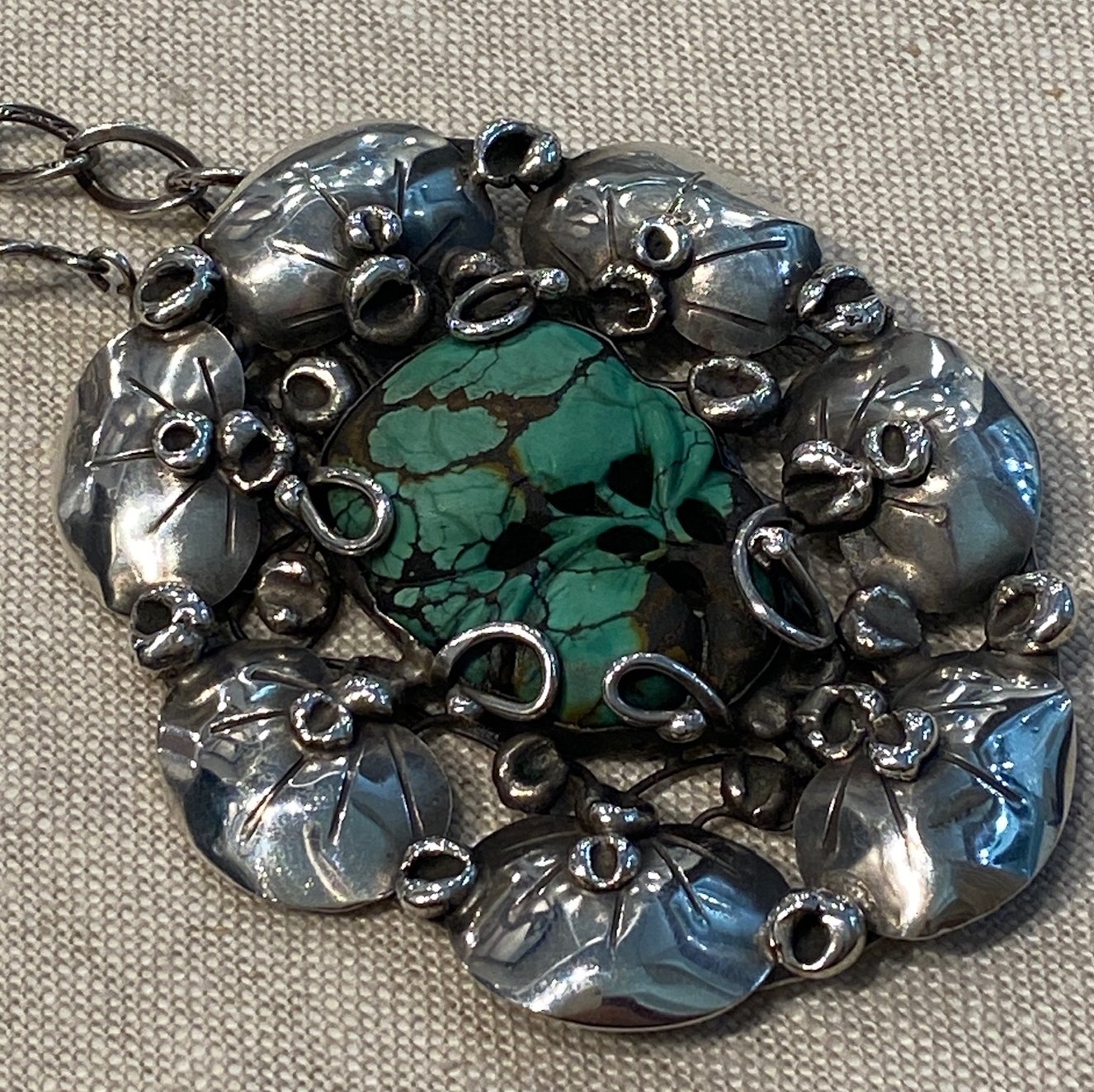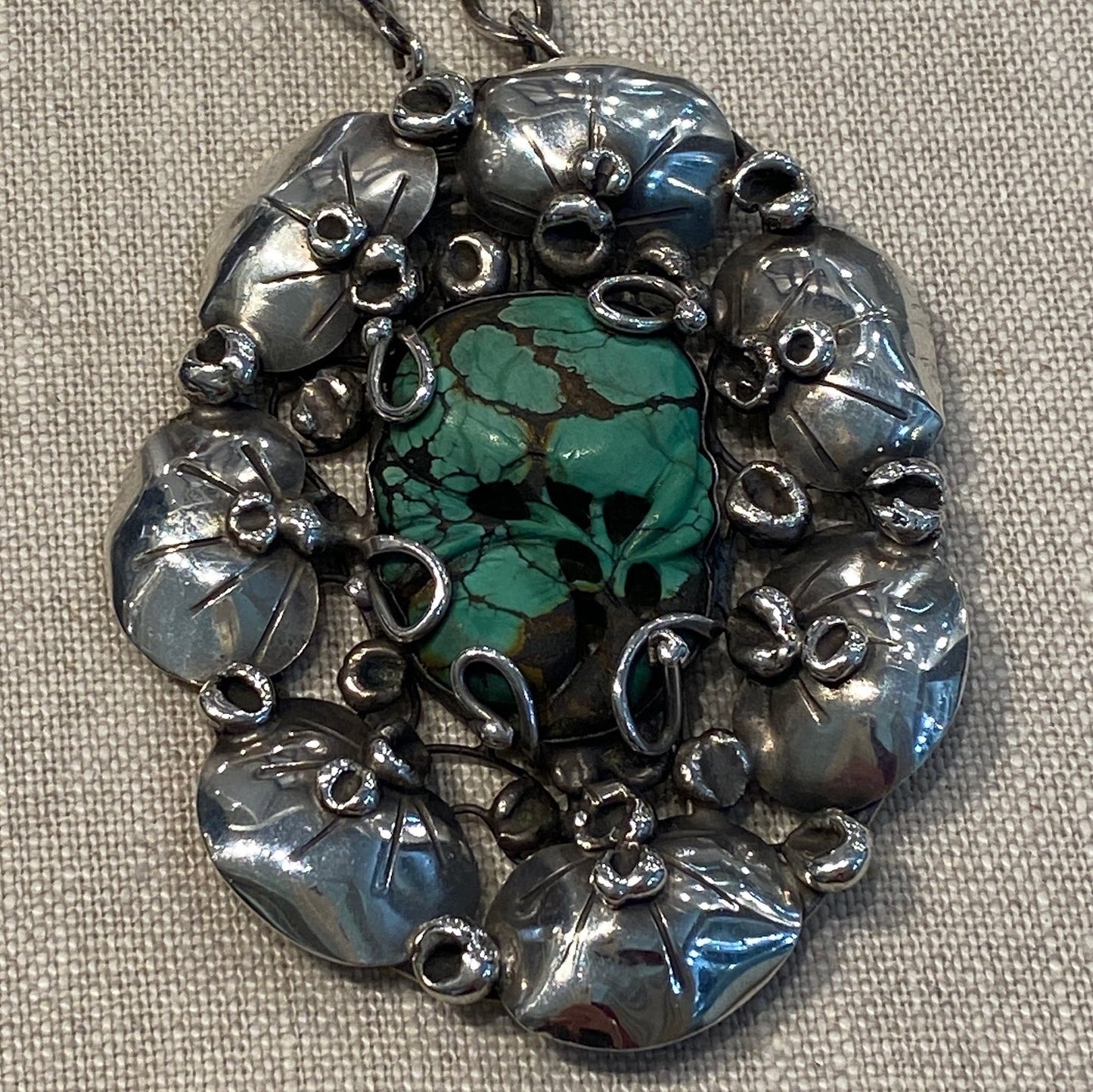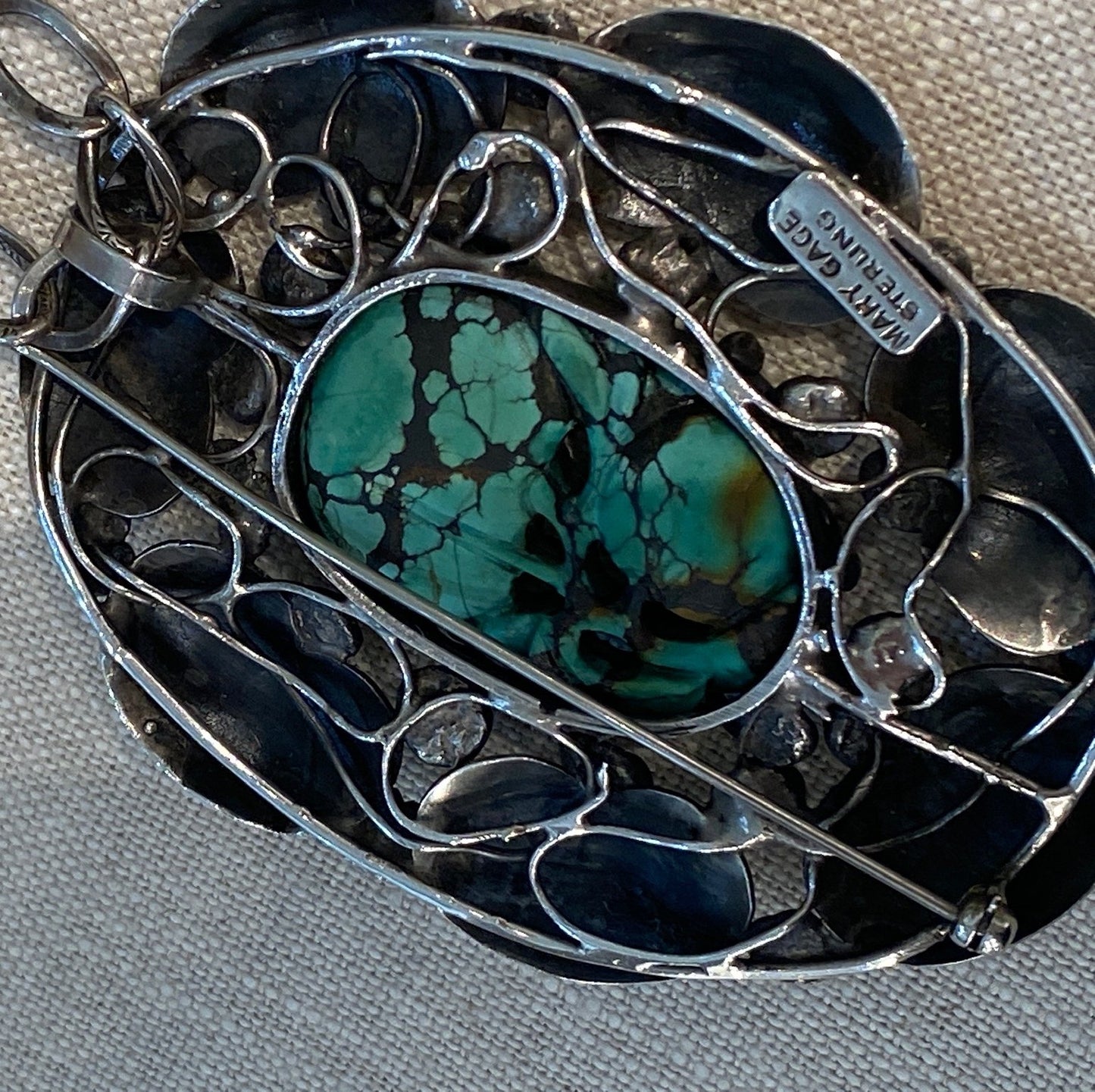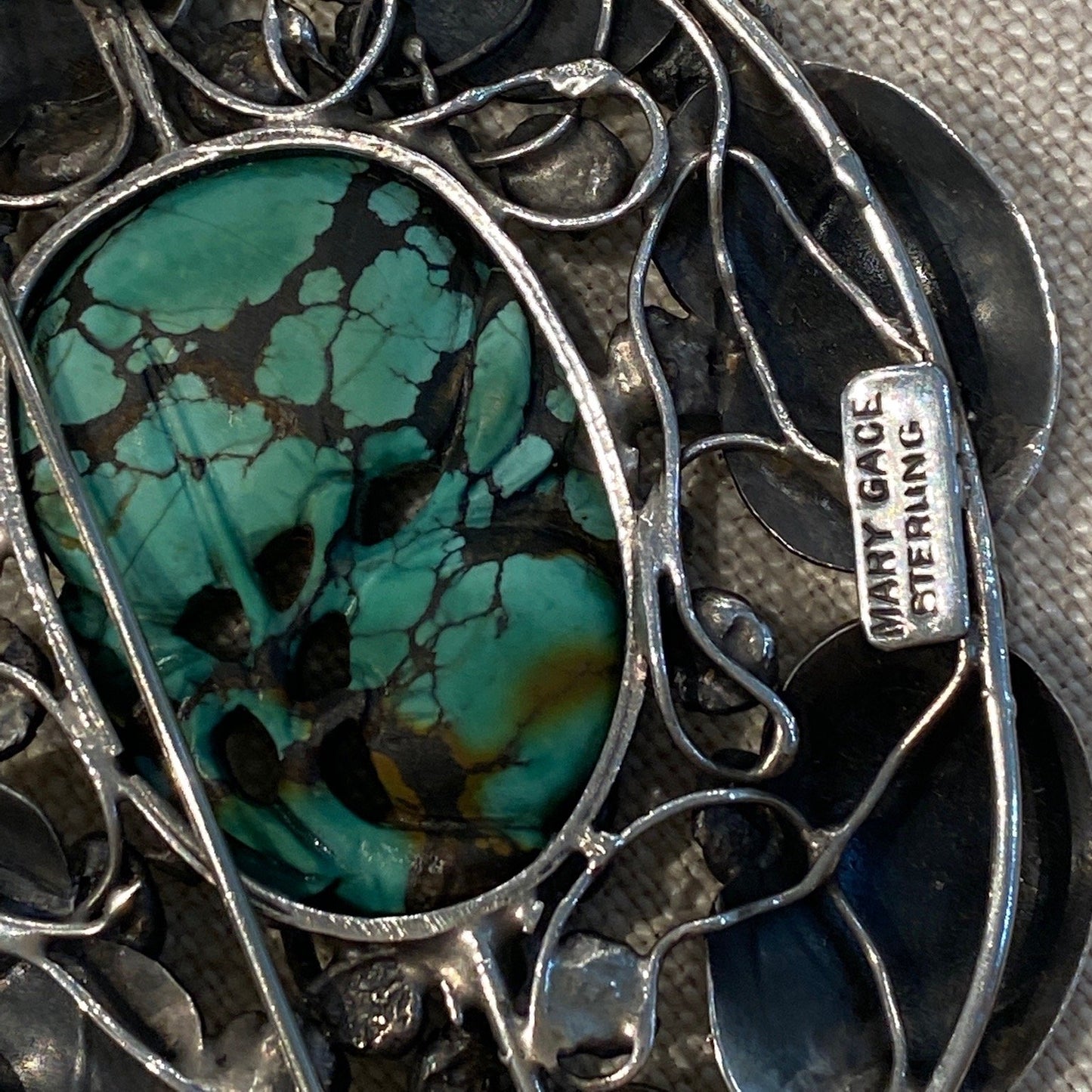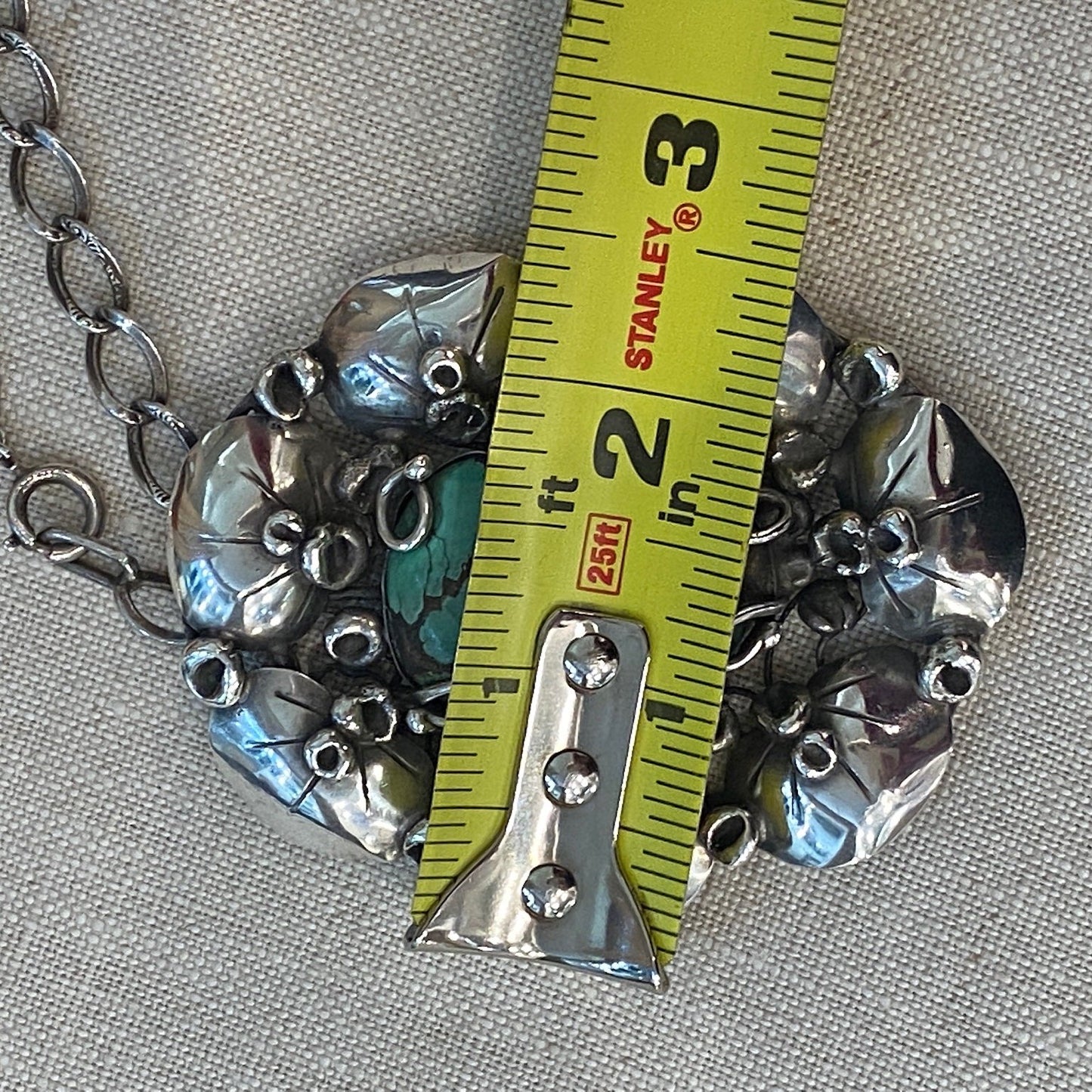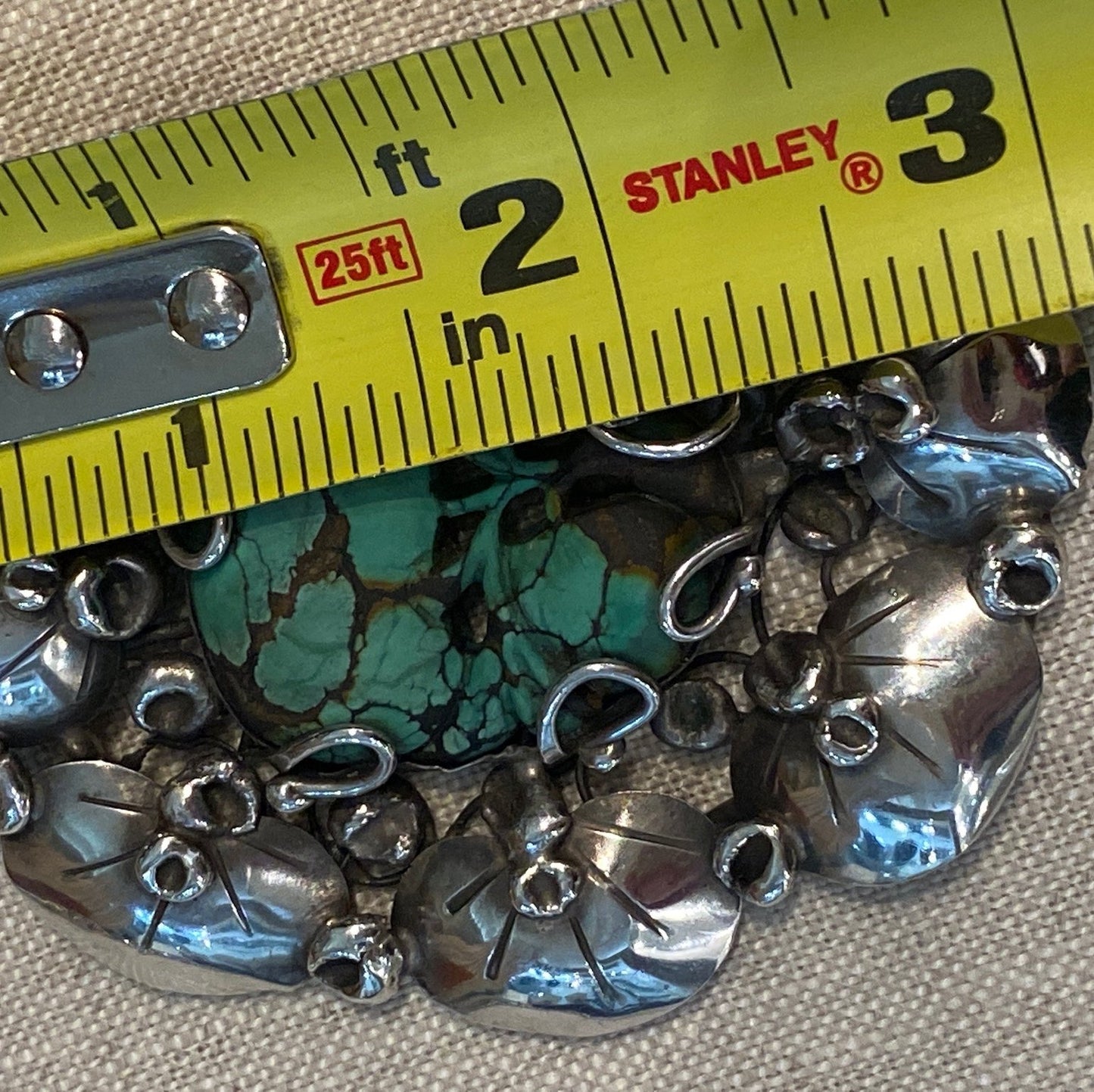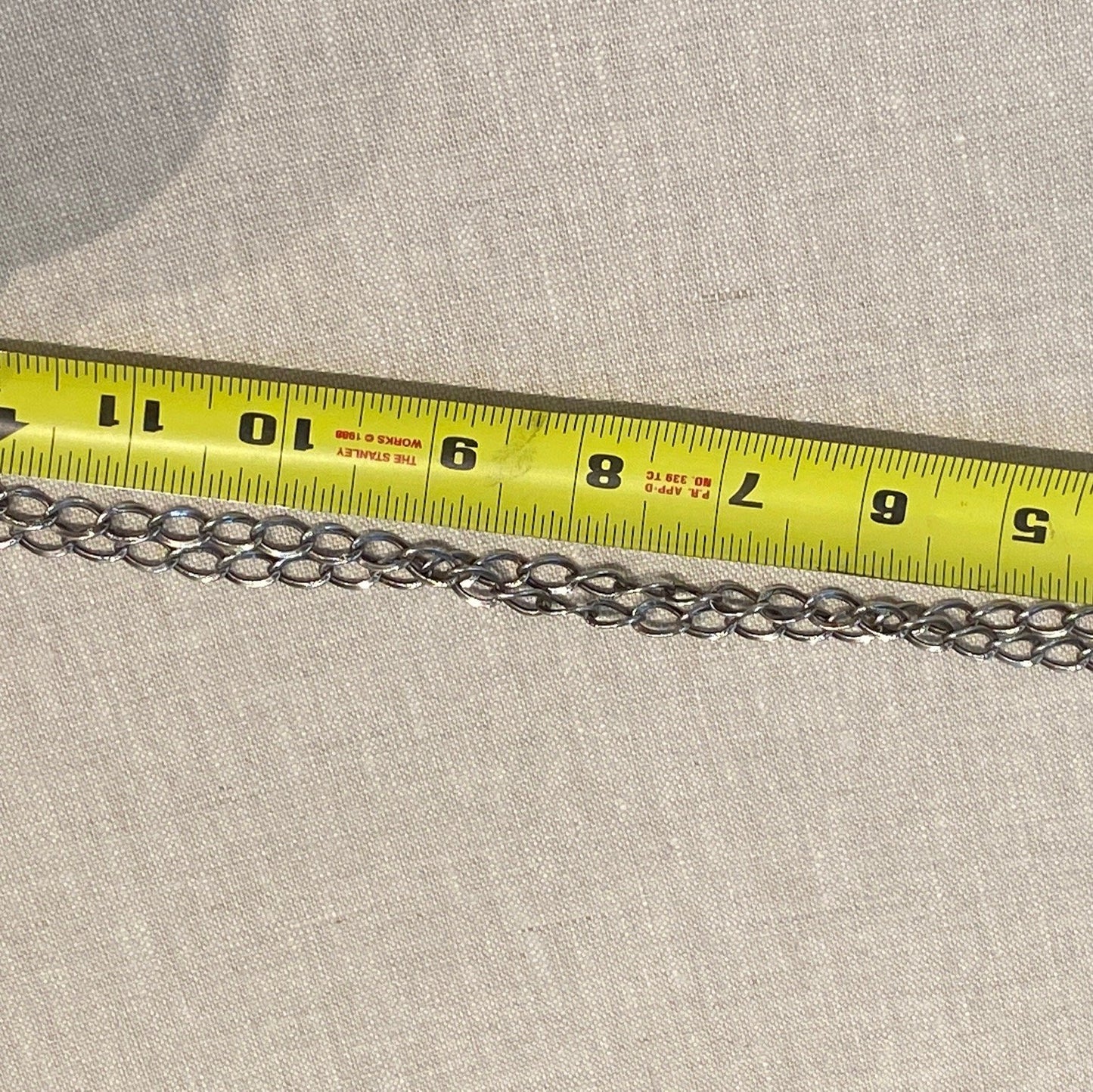Gallery 925
Large Oval Sterling and Natural Turquoise Brooch Pendant by Mary Gage
Large Oval Sterling and Natural Turquoise Brooch Pendant by Mary Gage
Couldn't load pickup availability
THIS ITEM IS SOLD!
If you have any Mary Gage to sell, please contact us
Beautiful vintage large oval sterling and natural turquoise brooch pendant with original silver chain by Chicago Arts & Crafts silversmith Mary Gage. This brooch measures about 3" by 2 1/2" and the turquoise stone. 7 chased sterling lily pads that frame a large natural carved turquoise stone that is held in place by silver loops.
Pendant Measures 3” L x 2.5” W
It is in excellent condition.
The turquoise is free of chips or cracks and has beautiful matrix. The silver has a wonderful vintage patina.
Signed "Mary Gage Sterling".
1940's.
Designer: Mary Gage
Maker: Mary Gage
Design #: n/a
Circa: 1940’s
Dimensions: 3” L” x 2.5 W. Chain length, 24” L
Country of Origin: USA
INV #: BRO-07
**Her obituary, from the Maine Antique Digest:
"Mary G. Gage died March 13 [1993] in Portland , Maine on the eve of the 'Great Blizzard.' She was born August 16, 1898 in St.Mary's (Township) Indiana.
"During her life, she had been a medical technician, a silversmith, a breeder of French poodles, a used-book seller, and an antique's dealer. After serving as a nurse at the time of World War I, she moved to Chicago where she studied and worked at St. Luke's hospital. In the early 20's she fled a brief marriage and spent three years traveling around the world; two of those years were spent in China, including a year in Peking. She developed then a life-long interest in things Chinese, ranging from literature to design to erotica to food. The balance of her trip was spent in India, Africa (including a trip on the Blue Train to Lake Victoria), and Argentina.
"On return to the States, she learned silversmithing and set up in business in New York. She owned a row house in Greenwich Village and had a workshop in SoHo where she was a regular at Fanelli's Bar. Her jewelry was sold in uptown shops and at exhibits throughout the country.
"In the 1940's, she lived in an old mill on the river in Westport, Connecticut, raising poodles. Following that, she moved to Hartland, Vermont, where she salvaged an elegant old brick house, which, after she left, became the Hartland Antique Center.
"In the '50's, Mary Gage moved to Maine, spending a number of years in Waldoboro, working as a silversmith, antiques and used-book dealer, and poodle breeder. At some point she also had a cat that did well in commercials. The citizens of Waldoboro didn't much appreciate Mary Gage (She was different, and her place did reek of dogs). In turn, she loathed Waldoboro, which she referred to as 'that pusspocket.' Her last years were spent in a Portland apartment where she continued to make jewelry and occasionally bought and sold antiques.
"Throughout her life, she had a series of interesting friends and acquaintances: from Henry Ford when she was a girl in school, to gum magnate Phillip Wrigley, whom she met in India, to Isamu Noguchi in New York to James Thurber in Connecticut, Maxfield Parrish in Vermont.
"In recent years, her jewelry has enjoyed increased interest as The Arts and Crafts movement has come to the fore. Auction houses have begun to feature her pieces and collectors have actively been seeking her work."
In her book Jewelry & Metalwork in the Arts & Crafts Tradition (p. 238), Elyse Zorn Karlin wrote that Gage had no formal training, and "learned her craft by working with Armenian and Yemenite Jews in Greenwich Village. In 1924 she had a workshop in Greenwich Village and later one in Soho."
Her work is very identifiable, with complex wirework frames, applied lily pads or leaves and silver balls, and extensive use of turquoise and other semiprecious stones. Her work is often confused with that of a contemporary with whom she was well acquainted, Lillian Pines.
Share
